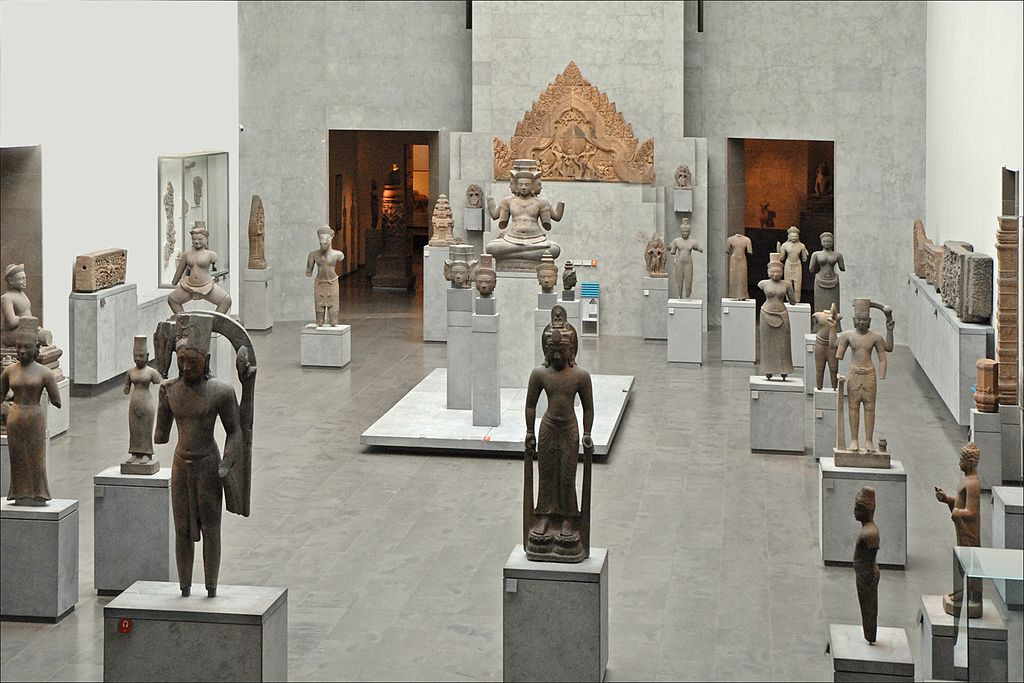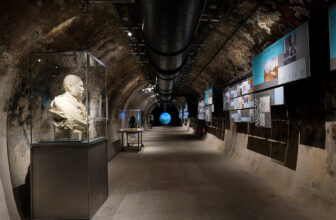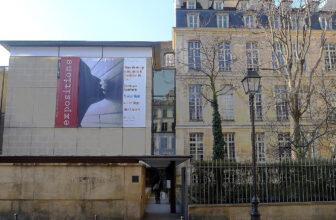
What is Inside The Guimet Museum?
The Guimet Museum, or the Musée national des arts asiatiques – Guimet, is one of Paris’s most treasured institutions, showcasing one of the world’s most comprehensive collections of Asian art. Located in the 16th arrondissement, this museum offers a deep dive into the art, culture, and spirituality of Asia, making it a must-visit for art enthusiasts and cultural explorers alike. Below, we explore the most significant artworks in the museum, the thematic organization of its collections, and what makes it a vital repository of Asian heritage.
Overview of the Guimet Museum
The Guimet Museum was established in 1889 by Emile Guimet, a French industrialist and traveler who had a profound interest in Asian civilizations. His mission was to create a space where visitors could immerse themselves in the art and spirituality of Asia. Over the years, the museum’s collection has expanded significantly, becoming a cornerstone for the study and appreciation of Asian art.
The museum’s collection spans several millennia and regions, including South Asia, Southeast Asia, Central Asia, East Asia, and the Himalayas. It houses over 45,000 artifacts, including sculptures, paintings, ceramics, textiles, and religious relics. Each object reflects the rich cultural tapestry of the region it represents.
Highlights of the Collection
Some of the most significant pieces in the Guimet Museum include masterpieces of sculpture, intricate paintings, and ceremonial objects. Below are some of the most noteworthy highlights:
1. The Bodhisattva Avalokiteshvara (Cambodia, Angkor Period)
This exquisite sandstone sculpture, dating back to the Angkor period (9th to 15th centuries), exemplifies the artistic and spiritual achievements of Cambodia. The serene expression and meticulous detailing of the figure reflect the mastery of Khmer artisans.
2. Japanese Ukiyo-e Prints
The museum’s collection of Japanese woodblock prints (ukiyo-e) is a treasure trove for admirers of Edo-period art. Works by masters like Hokusai and Hiroshige depict scenes of nature, everyday life, and the famed “Floating World.”
3. Tang Dynasty Buddhist Art (China)
The Tang dynasty is considered a golden age of Chinese art and culture. The museum boasts a collection of Buddhist sculptures and murals from this period, showcasing the synthesis of artistic innovation and spiritual devotion.
4. South Asian Gandhara Sculptures
The Gandhara region, located in present-day Pakistan and Afghanistan, was a melting pot of Greco-Roman and Indian artistic traditions. The museum’s Gandhara sculptures, including depictions of the Buddha, highlight this unique cultural fusion.
5. Tibetan Thangka Paintings
Thangka paintings are intricate scrolls used in Tibetan Buddhist rituals and meditations. The museum’s collection includes vibrant examples adorned with symbolic imagery and deities, offering insights into Tibetan spiritual practices.
6. Korean Celadon Ceramics
Korean celadon ceramics are renowned for their translucent glaze and delicate patterns. The museum’s collection features exquisite examples from the Goryeo dynasty, celebrated for their elegance and craftsmanship.
7. The Art of Southeast Asia
Bronze and terracotta statues from Thailand, Vietnam, and Myanmar showcase the region’s rich artistic traditions. Highlights include depictions of Hindu deities and Buddhist icons that reveal the interplay of religion and art.
Thematic Organization of the Museum
The Guimet Museum is organized thematically and geographically, allowing visitors to embark on a journey through Asia’s diverse artistic heritage:
1. India and Southeast Asia
This section covers ancient Indian art, including early Buddhist relics, Hindu sculptures, and Jain artifacts. The Southeast Asian collection explores the artistic traditions of Cambodia, Thailand, Vietnam, and Indonesia, with a focus on religious iconography and temple art.
2. China
China’s rich history is represented through ceramics, bronzes, jade carvings, and calligraphy. The museum’s Chinese Buddhist sculptures and Ming dynasty porcelains are particular highlights.
3. Japan and Korea
The Japanese collection features samurai armor, Noh masks, and delicate lacquerware. Korea’s contribution includes ceramics, Buddhist art, and rare manuscripts, reflecting the unique cultural identity of the peninsula.
4. Central Asia and the Silk Road
Artifacts from the Silk Road illustrate the cultural exchanges between East and West. Highlights include textiles, murals, and sculptures from Central Asia, revealing the cross-cultural influences of this historic trade route.
5. The Himalayas
The Himalayan collection is a spiritual journey through the art of Nepal, Bhutan, and Tibet. Intricately carved statues and ritual objects provide a glimpse into the mystical traditions of these regions.
Why the Guimet Museum Matters
The Guimet Museum is not merely a repository of art; it is a bridge between cultures. By preserving and showcasing the artistic achievements of Asia, it fosters a deeper understanding of the region’s history, philosophy, and spirituality. Scholars and art lovers alike benefit from the museum’s extensive collection and its commitment to cultural exchange.
Moreover, the museum’s educational programs, temporary exhibitions, and collaborations with institutions worldwide ensure that its treasures remain accessible and relevant to contemporary audiences.
Visiting the Guimet Museum
For those planning to visit, the museum offers a serene and immersive experience. Highlights include:
- Guided tours and audio guides for a deeper understanding of the exhibits.
- A tranquil Japanese garden and tea pavilion for moments of reflection.
- A library dedicated to Asian art and culture, offering resources for scholars and enthusiasts.
The Guimet Museum, officially known as the Musée national des arts asiatiques-Guimet, is located at 6, place d’Iéna, 75116 Paris, France. Musée Guimet
For more information, you can visit their official website: Musée Guimet
The Guimet Museum stands as a testament to the enduring power of art to connect people across time and space. Its unparalleled collection of Asian art provides a window into the spiritual and cultural heritage of a vast and diverse continent. Whether you are an aficionado of Asian art or a curious traveler, a visit to the Guimet Museum is a journey through the heart of human creativity and cultural dialogue.




